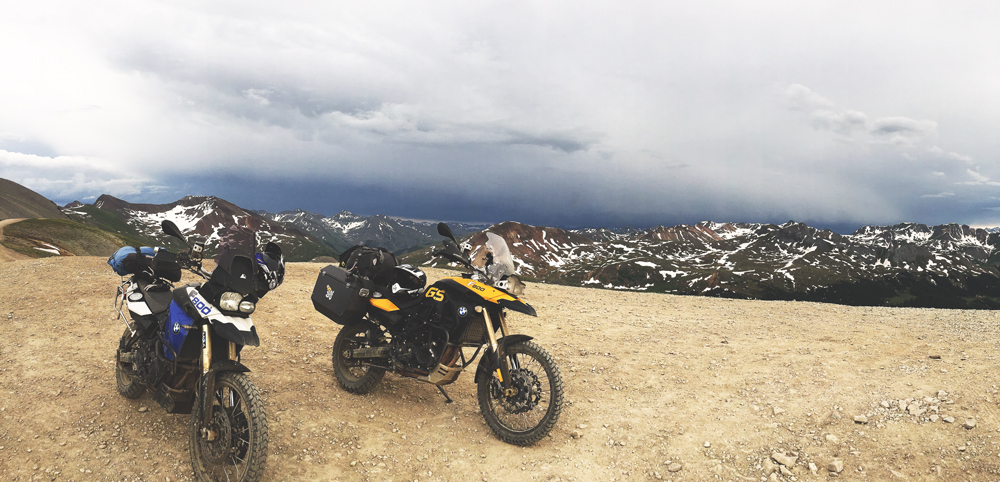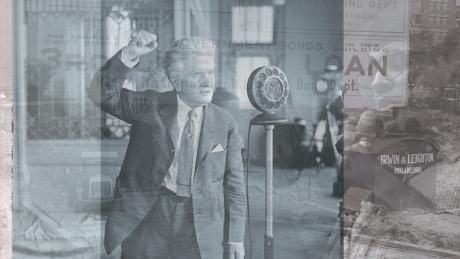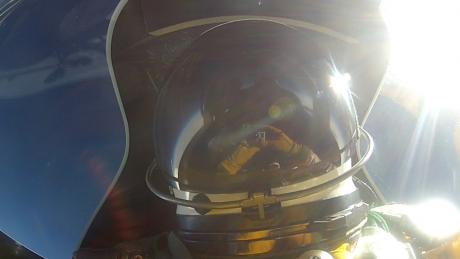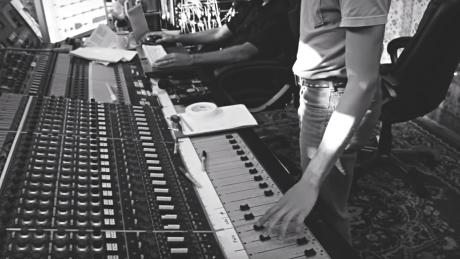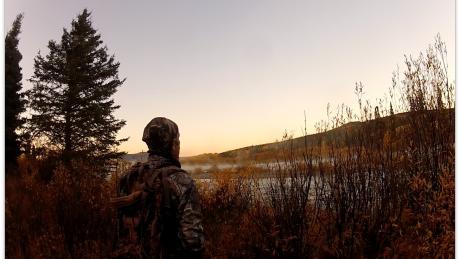
When Adventure Starts
“The word adventure has gotten overused. For me, when everything goes wrong —that’s when adventure starts.” Yvon Chouinard, 180° South
Sam pulled into my driveway on his blue BMW F800GS, complete with matching blue helmet and a blue dry bag strapped to his back rack. I’d just spent two hours packing and repacking my panniers and dry bag, trying to make final choices for what to bring. Our plan was to ride our F800GS bikes to the western slope of Colorado in order to scout Engineer Pass, one of the most famous 4-wheel-drive routes in the state and the most technical section of our planned route for the upcoming And Sons film trip. We wanted to see if it was as difficult as we’d heard and make sure we were comfortable leading the other four guys over it. As we’d studied maps and read trip reports from other riders in preparation, we had concluded that we’d either take the shortcut from Ouray or the slightly longer route to the south via Corkscrew Gulch. We came to the shortcut turnoff first and pulled off the highway.
The “road” ahead of us was a collection of small boulders and rock ledges almost immediately disappearing round a bend to the right. I pulled up on a hill next to the “Extreme 4-Wheel-Drive” information sign and almost dropped my bike. I played it off, hoping Sam hadn’t noticed. I was supposed to be the experienced rider on this trip, after all.
Sam parked his bike on some flat ground, took off his helmet, and asked me for a cigar. We took turns smoking it, staring at the road ahead. This was more than either of us had bargained for.
“Let’s go take a look at the next turnoff at Corkscrew,” I said. “Maybe it’s more manageable.”
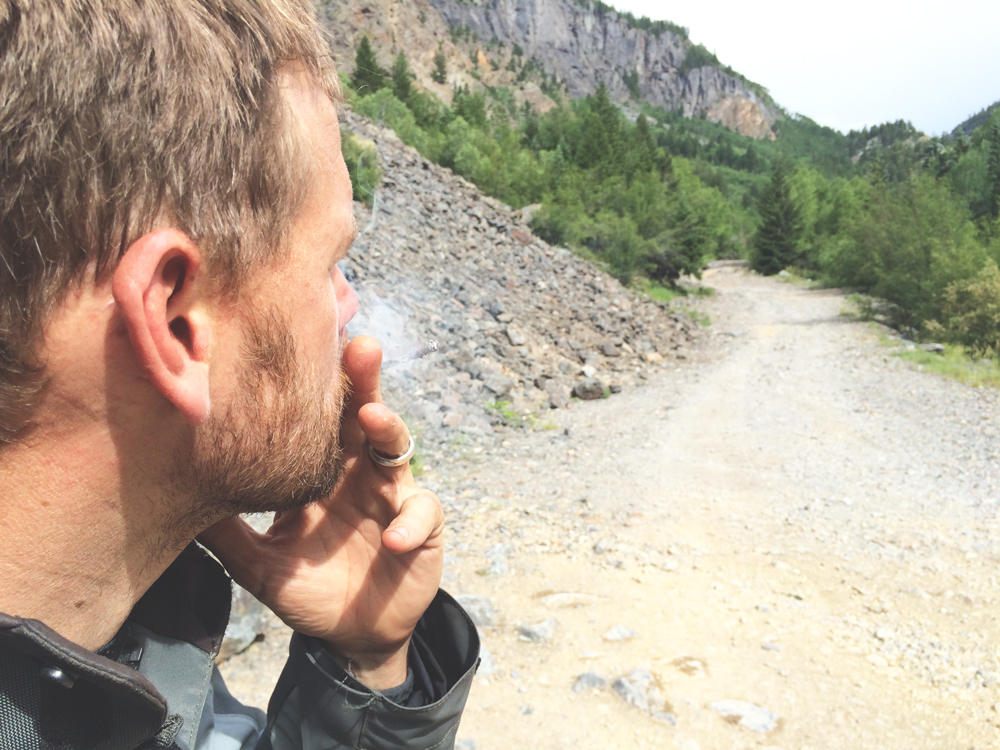
We pulled back onto the Million Dollar Highway and rode a few miles farther south to the Ironton Park trailhead, also known as the beginning of Corkscrew Gulch. When we arrived at the trailhead, we breathed a collective sigh of relief. This looked much better—a nice, hard-packed dirt road winding off into the trees. We knew we’d be facing several water crossings and some pretty significant exposure and elevation gains, but at least it looked like something we could actually ride up. We lowered our tire pressure so we’d have better traction on the dirt and rocks. I’d lead the way and we’d stop as soon as we found a good place to camp below treeline.
We headed off to the sound of whoops and hollers in our headsets. We were finally on dirt. That’s what these BMW GS bikes were made for! (Gelände/Straße is German for “off-road/road.” A dual-sport bike.)
Corkscrew Gulch began to live up to its name. What had started as a mild fire road quickly became a roller coaster of ups and downs, creek crossings and sheer exposure. We were having a blast. Then we came to a section where the snowmelt had turned a creek crossing into a 20-yard section of river over the road that we had to cross. A foot of fast water had eroded the road into a boulder field. I managed to pick my way through the boulders. As I headed up the bank on the other side, I heard Sam in my headset saying he was stuck. I pulled over, put down my side stand, and got off my bike, which immediately fell on top of me. The side stand had sunk six inches into the mud. I looked up to see Sam underway again and coming up the bank toward me. He managed to find some firm ground to plant his bike on and helped me pick up mine.
We kept climbing, and as we approached the treeline we found a flat spot that would be ideal for pitching our little tent. We had no idea that we wouldn’t be leaving that area for almost twenty-four hours.
That evening we cooked a Backpacker’s Pantry meal…and then a second. As the sun went down, we got into our sleeping bags, excited to be falling into the natural rhythm of going to sleep as the sun set and getting up with its rise.
Next morning we began at first light. This was the day we’d been talking about for almost six months. Engineer Pass was just an hour of riding away. We packed up our sleeping bags and sopping wet tent. It had rained all night, leaving a nice layer of muddy slime on all our gear. As Sam pulled back onto the road, his bike stalled. I pulled up next to him.
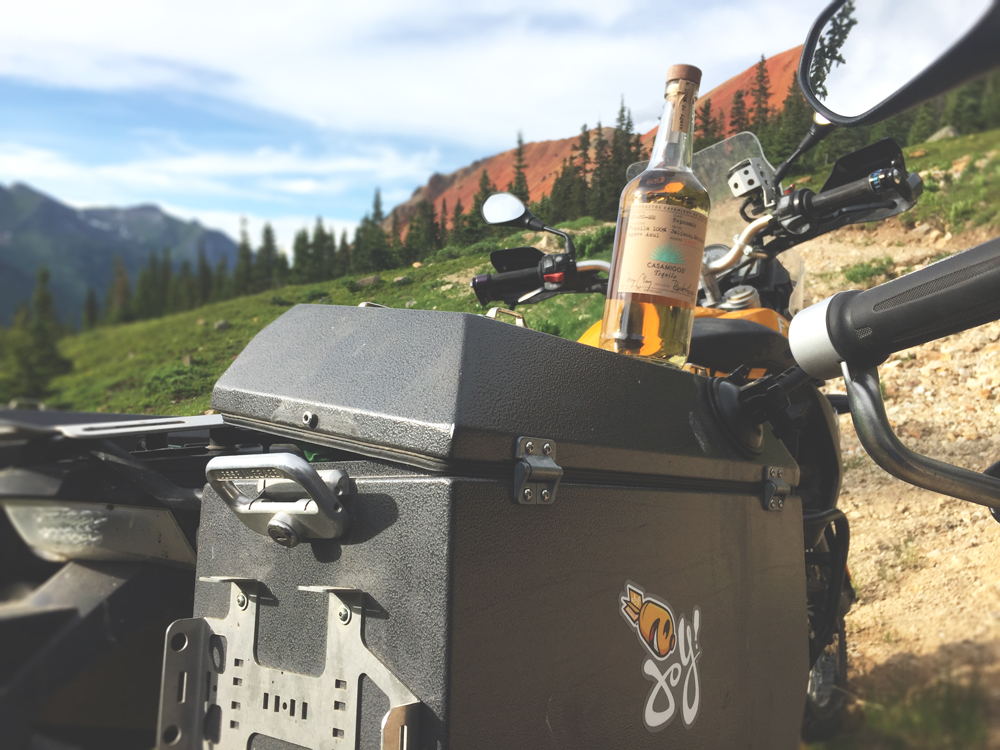
“My bike won’t start,” he said.
“What do you mean?”
“Well, it died when I first started it up a minute ago, then it started okay, but it seemed low on power as I rode up here. Now it’s dead and won’t start again.” I could hear his engine turning over as he tried to start it, but nothing was firing.
Houston, we have a problem.
Thankfully, I’d learned a little about engines over the past year. I helped rebuild a friend’s dirt bike, and I know that engines are really pretty simple—they need fuel, air, and spark. One of the three had to be missing since the bike had been running just fine the day before. The XR250 I’d spent the summer working on was a single cylinder carbureted engine. But these BMWs are fuel-injected twin cylinder 800cc beasts, much more complicated than the simple Honda, including a bunch of computerized electronics. But, I told myself, the same fundamentals still apply. Fuel, air, and spark—it had to be one of those three. I recalled a similar set of symptoms on my MINI Cooper a few years ago, and it had turned out to be the fuel pump. So I thought, Maybe that’s the issue here.
The fuel tank of the F800GS is under the seat, which is where we found the fuel feeder line coming out of the tank. Sure enough, there was a round access panel that we assumed concealed an in-tank fuel pump. The first thing to do would be to disconnect the fuel line and turn on the ignition to see if it started squirting fuel at us. That’s what a fuel pump is supposed to do, right—pump fuel? We were on the side of a mountain without cell service, so I knew AAA wasn’t coming to tow us out of there. We’d have to figure this one out ourselves. Sam had made a reference to an Yvon Chouinard quote the night before. Something along the lines of, “It’s not an adventure until something goes wrong.”
“I guess this is now officially an adventure,” I said as I turned on the ignition. Nothing happened—no stream of fuel, no whirring sound from a spinning fuel pump.
“All right, it’s got to be the fuel pump,” I said. “Let’s pull it out of the tank.”
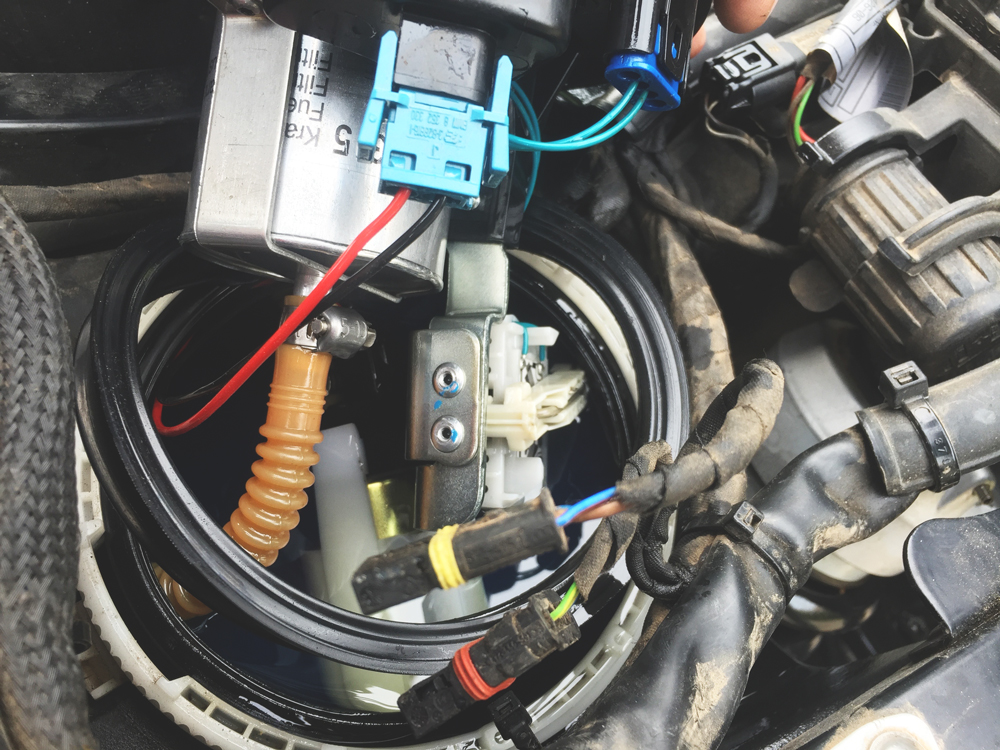
We soon had the access panel open, snapping pictures to make sure we could remember how it had come apart when the time came to put it back together. We carefully pulled out the fuel pump assembly and removed it from the wiring after triple checking to make sure the ignition was turned off. (Sparks didn’t seem like a good idea.) With the fuel pump in hand and the access panel back in place, safely sealing all the explosive fumes, we wondered what to do next.
Another rider came by. He offered to go to town and find a fuel pump for us. And so Sam and I found ourselves sitting there, staring at our bikes, expecting every engine we heard coming up the hill to be Saint Nick with our new fuel pump. Around noon we began to consider that perhaps Saint Nick wasn’t coming. If he had ridden down to cell service and called around and found us a pump in Montrose, he should’ve been back by now. We decided to give him another hour before we’d come up with a plan B. The hour passed slowly, our hopes rising and falling as each engine came up the hill revealing something other than our rescuer.
New plan: I’d ride down the hill to the highway and get cell signal and try to figure out what had happened to Saint Nick. Sam would wait an hour and a half and if I hadn’t returned, he’d catch a ride down the hill to the trailhead in one of the many Jeeps that had started going by in the downhill direction. We didn’t like the idea of splitting up, but it seemed to be the only plan that made sense. We didn’t want to sit there waiting if a new fuel pump wasn’t coming. We said a quick prayer and I headed off.
I was tense. The downhill was very technical with lots of exposure, and it was easy to imagine myself slipping off the side of the road and falling hundreds of feet to the bottom of a hidden gully. If that happened somewhere in the five miles back to the road, it could be days before anyone found my battered body. I knew I needed to relax, but my imagination was running wild with worst-case scenarios. I didn’t enjoy the ride down at all, but thankfully I made it to the bottom without incident.
Sure enough, I had a message from Nick, left at 9:30 that morning. Nick’s message explained that he’d called a few shops and hadn’t been able to find the part anywhere. Turns out we’d spent five hours waiting for nothing. Houston, we still have the same problem.
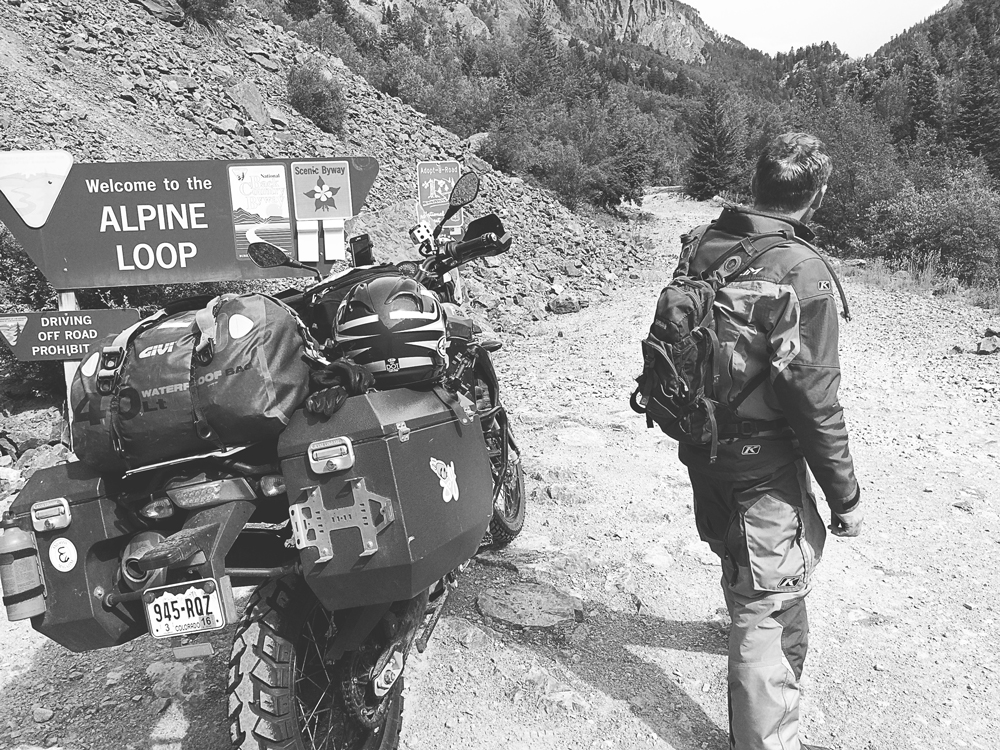
I reached out to some buddies. We tried finding the pump in several states to no effect. Justin then texted me to say he’d found the pump on Amazon, and 15 minutes later we’d ordered one with overnight delivery for $54, shipped to a repair shop 20 miles south of us in Silverton. Now we just needed to get a 500-pound, non-running bike off the side of a mountain and 20 miles down the highway, preferably before dark.
Sam was eager to try coasting his dead bike down the mountain road. And then there was the water crossing to contend with, all without an engine. Having ridden it white-knuckled a few hours earlier, I was skeptical and a bit afraid for him. But I didn’t want to say anything to make him worry, so I halfheartedly agreed to help him push it up the hill in front of us to get him going.
Sam rocked it! He rode the bike the whole way down on sheer momentum, including through the long water crossing. With no engine running, he went faster than I did. I had to race to keep up.
After bagging the last hotel room in town (oh, right—this was Fourth of July weekend) we rode my bike over the following morning to the auto repair shop that had been our delivery address for the part. Sure enough, they had it waiting for us at the counter. We installed the new pump, hit the ignition, and turned the key. After a moment's hesitation the bike fired up and started purring. We were right—it had been the fuel pump! Our trip could finally continue. Time to grab some fuel and head for Engineer Pass.
As Sam filled up, gasoline started pouring out from under the seat. I knew immediately what had happened—as we’d reinstalled the new fuel pump, we had misaligned the tank seal on the access port.
“Not a big deal. This is an easy fix,” I told Sam. Oh, such idle words.
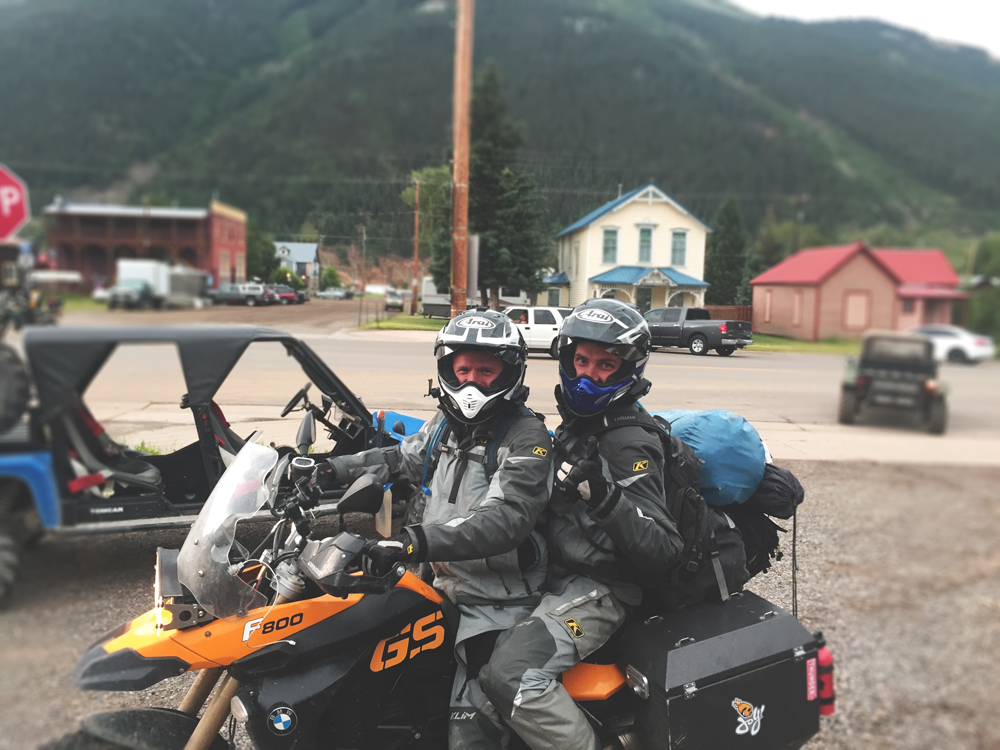
In our rush to get the fuel line removed, we snapped off the feed pipe—a vital part of the fuel system. Without it there’s no way to get fuel from the tank to the engine. This was a serious problem. It felt like a punch in the gut after the jubilation a few minutes earlier when the bike started. The next day was the Fourth of July; if we couldn’t find this part in the next couple of hours, we were stuck until Monday at the earliest. We pushed the bike around the corner to the side of the repair shop so we could get some space, think, and assess the situation.
At that moment Geordy, the owner of the shop, came around the corner. “Bike trouble?” he asked nonchalantly. We explained the situation to him. “Can I see the broken part?” Sam handed it to him. “Hmmm. Never seen one like this before. You know what I’d try to do? Take a piece of a ballpoint pen and join these two parts together.”
He was like a real-life MacGyver. “Give me a minute,” Geordy said and disappeared into his shop. He came back with a one-inch piece of tubing. “I think this might work,” he said. Then Geordy connected the two broken pieces with the small piece of tubing.
“Should we glue it or something?” I asked.
“Well, you’ve got nothing to lose by trying it without glue first, just to see if it holds. Reconnect that fuel line and see what happens,” Geordy said as he walked back into his shop to help a customer.
So I hooked the fuel line up, clamped it in place, and turned the key, expecting fuel to start squirting everywhere. It didn’t. The bike started right up.
Geordy reappeared with a smile on his face and a tray of JB Weld. “Coat the repair in this and then wait four hours for it to cure. And take this with you as Murphy insurance.” He handed Sam another piece of tubing.
With hope in our hearts again, we walked back into town and grabbed some pizza for lunch. Four hours later we were back at the gas station, filling up. And two hours later we were at the top of Engineer Pass. By ourselves. Watching the sun set.
After all—we did go out seeking an adventure.
